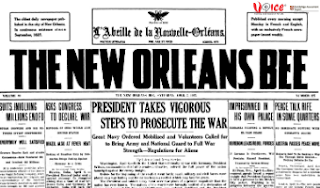A Peek into English Language Writing Styles
All around us there are practically infinite
things to read-and innumerable ways to write. But concisely speaking only four
different types of writing styles. Do you know them? For that
matter, what is style in writing?
 |
| English Language Writing Styles |
Here’s unpacked the elements of style in writing as well as an understanding of how they sometimes overlap.
The
four distinct types of writing are expository, descriptive, persuasive, and
narrative. Each of these writing styles is used for a specific purpose. A
single text may include more than one writing style many times.
Looking
into each of these basic styles of writing provides one with clarity on how to
write.
Expository
Expository
writing is one of the most common types of writing. When an author writes in an
expository style, all they are trying to do is explain a concept, imparting
information from themselves to a wider audience. Expository writing does not
include the author’s opinions, but focuses on accepted facts about a topic,
including statistics or other evidence. Expository writing is long on facts and
short on storytelling and literary flourishes. It can inform or instruct
readers about a subject, but in its purest form, it’s not out to change
anyone’s mind.
Mostly,
this style shies away from bold and strong opinions or value judgments; instead
it aims at delivering straightforward information and data.
Examples of Expository Writing
Textbooks,
How-to articles, Recipes, News stories (not editorials or Op-Eds), Business,
technical, or scientific writing.
Descriptive
Descriptive
writing is often the style used in fiction, though it can make an appearance in
nonfiction as well (for example, memoirs, first-hand accounts of events, or
travel guides). When authors write in a descriptive style, they are painting a
picture in words of a person, place, or thing for their audience. The author
might employ metaphor or other literary device in order to describe the
author’s impressions via their five senses (what they hear, see, smell, taste,
or touch). But the author is generally not trying to convince the audience of anything
or explain the scene - merely describe things as they are. Indeed, on its own,
descriptive writing is usually brief-but it also makes regular appearances as
an element of lengthier styles,
Examples of Descriptive Writing
Poetry,
journal/diary writing, descriptions of nature, fictional novels or plays.
Persuasive
Persuasive
writing is the main style of writing that is used in academic papers. An author writes in a persuasive style to
convince the audience of a position or belief. Persuasive writing contains the
author’s opinions and biases, as well as justifications and reasons given by
the author as evidence of the correctness of their position. Any
“argumentative” essay you write in school should preferably be in the
persuasive style of writing. As the name implies, this writing style sets out
to win its audience over to a certain point of view. It builds an argument by
presenting evidence and justifications to back up an opinion. This may further lead to a call to action.
Examples of Persuasive Writing
Cover
letters, Op-Eds and Editorial newspaper articles, Reviews of items, Letters of
complaint, Advertisements, Letters of
recommendation.
Narrative
Narrative
writing is used in almost every longer piece of writing, whether fiction or
nonfiction. When an author writes in a narrative style, it is not just trying
to impart information, but trying to construct and communicate a story,
complete with characters, conflict, and settings.
Examples of Narrative Writing
Oral
histories, novels/novellas, poetry (especially epic sagas or poems), short stories
and anecdotes.


Comments
Post a Comment